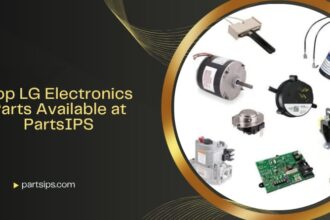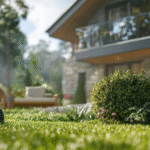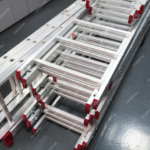Particularly in today’s ecologically aware environment, shielding crops, gardens, and even outdoor spaces from excessive exposure to the sun has assumed greater significance. Well, as a farmer or businessperson using land for cultivating crops or even as a gardener, shade nets can prove to be beneficial long term. While these nets might fetch your benefits, not all of them are the same, so it is vital to consider factors outlined earlier. Knowing what shade nets offer is very important to make an informed decision during the purchasing stage.
Understanding What Is Shaded Net Purpose
The main function of blue laminated red nets with grommets is controlling and protecting productivity-damaging elements like sunlight & temperature, along with harmful ultraviolet rays. These nets have shifted from being used exclusively in agriculture into more holistic applications like nurseries, greenhouses, or even sprawling commercial buildings as patios and parking lots. Country- and climate-specific regions that produce agricultural goods and undertake research. This shifts the focus of the shield towards heated light protectors, enhancing and improving enabled arachidonic productivity throughout the agricultural industry.
Different Categories of Shade Nets
Shade nets are classified by percentage of shade offered, typically between 30% and 90%. Light nets, which provide 30-50% shading, are suitable for delicate plants and nurseries. In contrast, heavy duty applications like parking lots often require 75-90% shading. Furthermore, the material of the net such as HDPE (high-density polyethylene) affects how long lasting and resistant to UV radiation it is. Knowing your use case will assist in determining the right type of shade net.
Considerations Prior to Buying a Shade Net
Evaluating some factors can save you time and money trying to protect crops or areas with ill-suited tools. Think about the weather in your area and what crops you want or already have cultivated, as well as their placement. Pay attention to net color too: green, black, and white, or even red colors alter light diffusion, stimulating plant growth differently.
Check warranty terms alongside stability guarantees marking UV treatment, ensuring long-term exposure to the sun won’t damage the structure.
Why a Good Quality Shade Net Should Be Purchased
Buying a high-quality shade net is an investment, as it protects your crops, gardens, and structures from potential damage. Shade nets may be poorly manufactured and cheap, but they are likely to lose color due to the sun and the harsh weather greatly deteriorating them. A shade net that is long-lasting provides durability by enduring through various seasons while providing reliable protection and minimizing maintenance costs in the long run. Moreover, these shade nets reduce propane or energy used for cooling in greenhouses, which makes them eco-friendly.
Different fields utilizing shade nets
Apart from agriculture, many other fields are using shade nets, which proves their versatility. In construction, these nets provide scaffolding cover and dust control during works. They safeguard flowers and saplings from too much sunlight, making horticulture possible. For livestock they provide cooler, shaded areas to combat heat stress. Hotels, cafes, or venues set up decorative shade nets as outdoor shelters for guests, increasing comfort. These diverse applications emphasize how crucial it is to focus on the intended usage when selecting the net
Where to Buy and What to Look For
A shade net should come from a reputable supplier or manufacturer. It should also have certifications for UV protection, as well as for the material used. Customer reviews are helpful, as are samples prior to bulk purchases. It’s important that the supplier gives installation guidance and after-sales support since these are important for long-term use and maintenance.
Closing Words
The protective covering offered by shade nets is only part of their valuable function; they are a protective investment for agriculture as well as commercial use. Shade nets play an essential role in creating appropriate microclimates and enhancing productivity, which makes efficient investments across varied agricultural fields and terrains. The right products can translate into expenses offset by returns over time with proper need-based investment strategized through careful consideration. Agricultural crops, patios requiring temperature control, or parking lots requiring cover can all benefit from dependable performance provided by quality shade nets regardless of the application.

















